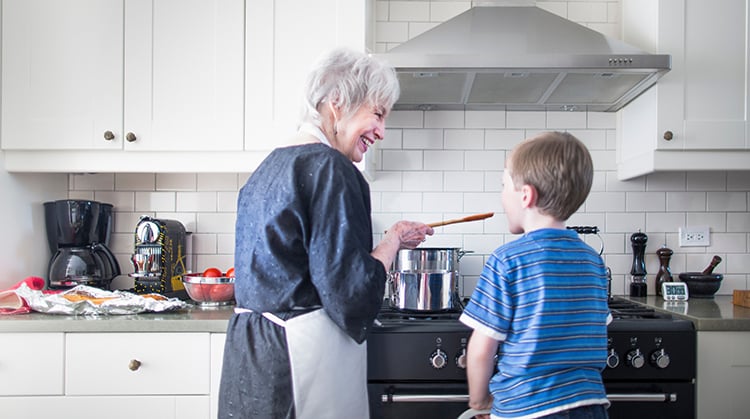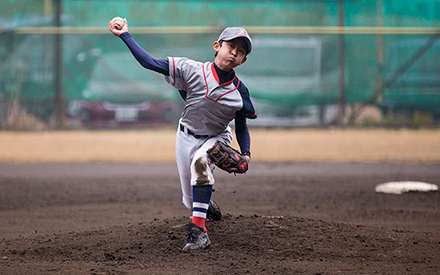
All of us will fall during our lifetimes. For older adults, however, falls can more easily result in serious, potentially life-threatening injuries. The good news is that many falls can be prevented with a few precautions around the home. A physical therapist also can work with you to improve balance and strength to reduce your risk of falling.
Falling is the No. 1 cause of harm among older Americans. According to the Centers for Disease Control and Prevention, treating injuries caused by falls is costly. About $50 billion is spent annually on medical costs for nonfatal falls injuries. Consider these other statistics:
- More than 95% of hip fractures are caused by falls.
- Falls are the most common cause of traumatic brain injuries.
- Falls result in thousands of unintentional deaths among adults age 65 and over each year.
Falls are not a normal part of aging, and they are preventable. If you find yourself losing your balance or feeling unsteady sometimes, it's time to reduce your risk. A great place to start is in your own home.
Here are some tips to make your home safer to prevent falls:
1. Restrain pets.
Pets are wonderful companions, but they can also get underfoot and cause us to trip. If your pet tends to hang out right by your feet or tends to bump into you, it can increase your risk of falling. Consider keeping pets in a room where you usually only sit, such as the living room. You can use baby gates or body leashes to keep them out of the kitchen and bathroom and off the stairs. Training can also teach pets to stay away from your feet, both inside your house and during walks outside.
2. Make your floors, walkways, and stairs safe.
Clear clutter. Objects on the floor or stairs can pose a trip hazard. Ensure that stairs and walkways are always clear of shoes, toys, or other items that could cause you to trip.
Remove loose throw rugs. Items, such as loose carpets and area rugs, can buckle or have edges that don't lie flat and can catch your feet, creating a tripping hazard. It's best to remove uninstalled, unsecured rugs.
Use nonslip footwear. Avoid wearing slippery socks or smooth-soled shoes. Opt for secure-fitting, nonslip footwear to reduce the risk of slipping. If you have wooden or tile stairs, consider adding nonslip mats or treads to each step to increase friction and prevent slipping.
Secure handrails. Make sure the handrails on the stairs are sturdy and securely fastened. They should extend the entire length of the stairs. Consider adding a second secure railing on the opposite wall to provide extra support. This is especially helpful for those with mobility issues or muscle weakness.
Repair loose or damaged steps. Regularly check for and repair any loose or damaged steps, which can be a serious hazard. Consider installing gates at the top and bottom of stairs to prevent accidents if small children or pets are in the home.
3. Illuminate dark areas.
We rely on our vision to help keep our balance, especially as we age. Adequate lighting is crucial for visibility, and walking in a dark room can increase the risk of falling.
Ensure proper lighting. Make sure that staircases, entrances, and areas where you walk from a vehicle to your front door are well-lit, and consider adding night lights in hallways, bathrooms, bedrooms, stairs, and the kitchen or other indoor areas that you might go into after dark. Consider motion-detector lights, which can light a room when you enter, so you don't have to find a light switch in the dark.
4. Slip-proof your tub, shower, and bathroom.
Bathroom floors can become slippery from water and steam, and the surfaces are usually very hard and unforgiving. Slipping and falling in your bathroom can be very dangerous.
Use nonslip mats. Make sure to place a nonslip mat on the bathroom floor where you step into and out of the shower or tub and in front of the sink or other areas that may get wet. You'll want one that isn't too thick, so it's not a tripping hazard. Also place one that will stay put in the shower and tub.
Install secure grab bars. It is important to have something to hold on to for support when entering or exiting the shower and tub or if you need to bend down to pick up something from the shower floor. Install a grab bar or two inside the shower and one near the shower or tub entrance if needed. Having one next to the toilet can also help, especially for people with mobility concerns. Grab bars are also handy "to grab" if you lose your balance.
5. Wear well-fitting, sturdy shoes. Avoid slippers and loose footwear.
Loose or soft footwear, such as slippers and some sandals, can twist or slide off your feet and cause you to trip. They often don't provide the support needed for walking safely. Some of them can also be slippery on certain floor surfaces.
Wear supportive shoes. Sneakers and other secure-fitting shoes with good traction are safer to wear around your house. These types of shoes will stay on your feet and prevent sliding on the floor. Don't want to wear "outside shoes" inside? Consider having a specific pair of sneakers (instead of slippers) that you only wear when inside your home to avoid tracking in dirt from the outdoors.
Download our Falls Prevention Home Safety Checklist based on the recommendations in this article.
How Physical Therapists Can Help
Falls are preventable. A physical therapist can help you assess your risk factors and develop a plan to address them so you can remain independent. Physical therapists help people prevent falls by:
- Developing a personalized exercise plan to help improve your strength and stability.
- Providing a safe balance training program.
- Identifying other ways to reduce your falls risk and make your home safe.
Talk to your physical therapist for more tips to avoid falling and fall-related injuries. Physical therapists are movement experts. They improve quality of life through hands-on care, patient education, and prescribed movement. You can contact a physical therapist directly for an evaluation. To find a physical therapist in your area, visit Find a PT.


